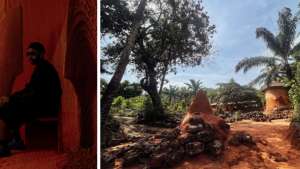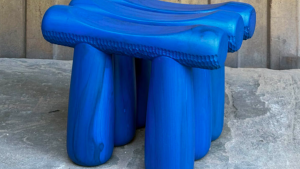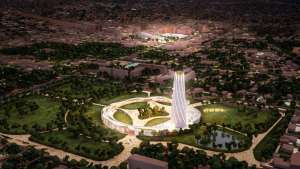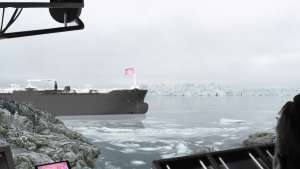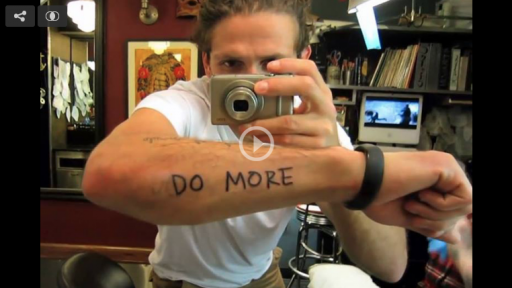From the Series
Virtual reality is going to radically change the architecture industry. Architecture firms are able to computer-generate accurate representations of spaces, which allow the client and user to get a real feeling for what being in that space will be like. That detailed and realistic experience is an enormous jump from traditional 2D renders.
While consumer headsets aren’t as readily available in South Africa as they are in other parts of the world, there are some firms who have adopted 3D imaging and spatial representation. Gerard Slee is the virtual reality specialist at SAOTA, a design and architecture practice in South Africa. We asked Slee about how he uses VR at work.
What is your job title and what does your average day involve?
I am an architect: I supervise SAOTA’s 3D department and focus on virtual reality development. Some of my day is dedicated to searching the internet for new technology and software and trying to implement these into our workflow. I spend time creating tools or bug fixing some issues in past tools/apps I have developed. I make videos of some of our architecture, but ultimately I would like to change the way architects design using technology.
What is your background? How do you learn about VR?
My interest in technology and passion for in how we interact with computers led me to software development, I have a gripe with the mouse and the keyboard still used by all. These outdated input devices are limiting the way architects are designing on a computer.
How were you using VR before you started at SAOTA?
I studied architecture and during my free time I liked to experiment with 3D space, tinkering and trying out different rendering techniques. Creating these 3D worlds/scenes is the first step towards a virtual reality, rendering them is the final step. Often my rendering was limited by technology available to me. I did some augmented reality tests on an iPad and on a computer using a construction helmet with a mounted webcam and some basic projector mapping using a portable projector, but it was only at SAOTA that I first had access to a VR Headset.
How did you get into using VR? What was your first project?
After my third year of studies I decided to focus some time on mastering 3D modelling, I always appreciated 3D models as tools for architects, but students don’t get much help from lecturers regarding the use of computers to generate these models.
At some point I realised that still images will never explain space as well other interactive methods. I started doing animated walkthroughs of architecture and slowly made my way towards coding my own tools and interactions.
Do you think South Africa is keeping up with how the rest of the world is using VR in the architecture industry?
I believe we [SAOTA] are at the forefront of VR development in the South African architecture industry. Unfortunately the consumer VR headsets do not currently ship to South Africa, this means some of the newer features aren’t available to developers in our country.
Is there any way in which VR can specifically effect architecture in emerging economies?
VR allows for communicating design iterations without the need for a full architecture document. This means that valuable decisions can be made regarding architecture that might have taken longer hours to get into a presentation form available to clients/contractors. It can cut costs in many ways during the design and presentation phases of a project and ultimately lead to a more resolved design.
What can using VR add to architecture practices?
Soon tools will be available that allow for designing in VR. This will be a game changer and will allow for unprecedented design and spatial resolution at initial stages of architectural design. This will bring a creative freedom, much like sketching, to 3D design.
How is it different from seeing renders? Will VR make renders pointless?
The difference between seeing a standard render and a VR render is depth and presence. If rendered correctly and with enough skill the viewer will actually feel present in the rendered space – a virtual reality. Depth and the volume of space is also much more relatable in a VR render: each eye is presented a much more accurate representation of what they will see and the brain converts this to 3D. Height, volume and depth are all very much part of Stereoscopic Virtual Reality.
Is it much more time consuming to create a VR render?
Creating a 3D environment takes a while regardless of rendering techniques.
Does drawing or creating in 3D become intuitive? Or is it strange?
Drawing in VR is very intuitive and will be readily available quite soon. Check out Google’s Tiltbrush.
How does SAOTA use VR?
At SAOTA we use VR for designing within the office as well as for client presentations. It allows us to design our work in South Africa and present it elsewhere in the world. Often a VR render can explain a space much better than words or drawings could.
What is the most exciting architecture and VR experience you've had?
We presented some of our initial VR renders to a client on a construction site for the project. Aligning the VR to the in-construction space proved extremely successful and allowed for discussions between the architect, the contractor and the client.



